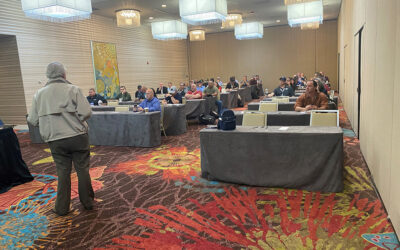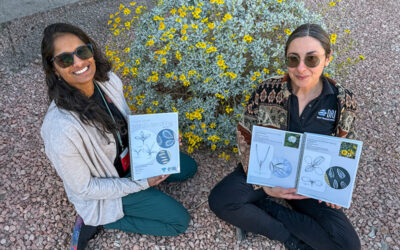Meet Natasha Sushenko, Graduate Researcher
May 11, 2021
LAS VEGAS, NEV.
By Kaylynn Perez
Environmental Microbiology
Pathogenic Bacteria
Space
Natasha Sushenko is a graduate research assistant with the Division of Hydrologic Sciences at the Desert Research Institute (DRI) in Las Vegas. She is a Master’s student in Biological Sciences in the School of Life Sciences at the University of Nevada, Las Vegas (UNLV), and is co-mentored by Duane Moser, Ph.D., of DRI and Brian Hedlund, Ph.D., of UNLV. Funding for Natasha’s position is provided by the NASA EPSCOR Rapid Response Research Program. Learn more about Natasha and her graduate research in this interview with DRI’s Behind the Science Blog!
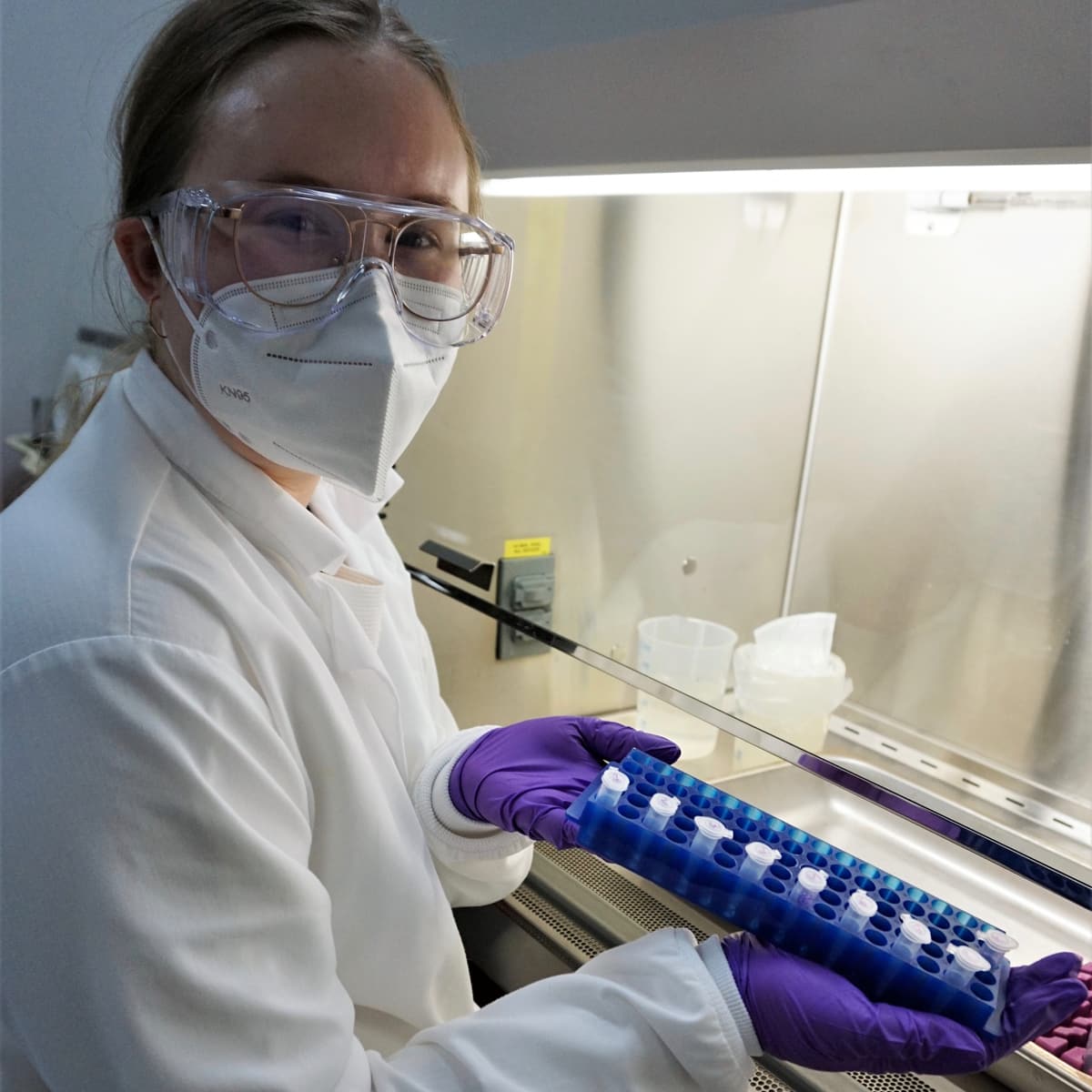
Natasha Sushenko processes samples using a biosafety cabinet in the Environmental Microbiology Lab at the Desert Research Institute in December of 2020 during a SARS-CoV-2 wastewater monitoring study. Sushenko is a graduate research assistant with the Division of Hydrologic Sciences at DRI in Las Vegas.
Credit: Ali Swallow/DRI.
DRI: What brought you to DRI?
Sushenko: Dr. Duane Moser spoke in my undergraduate Microbial Ecology class at UNLV, and I was really interested in how his lab studies the deep biosphere, the zone of life that exists far below Earth’s surface. His lab does fascinating research on “microbial dark matter,” yet-to-be-classified microorganisms that live under extreme conditions within the deep biosphere and are difficult to culture in the lab. We kept in touch, and even though I considered leaving Las Vegas to do my graduate studies, the opportunities that he and DRI offered were too good to pass up.
What research projects are you working on? And who at DRI are you working with?
Sushenko: I work in Dr. Moser’s Environmental Microbiology Lab here at DRI. We completed a COVID-19 wastewater monitoring study this winter, but my main research project is a NASA collaboration with the Jet Propulsion Laboratory (JPL). They sent our lab strains of a pathogen (disease-causing bacterium) called Klebsiella pneumoniae that were isolated from the International Space Station (ISS). This microbe is a common cause of hospital-borne pneumonia and other infections, but in this case, it was found living on surfaces on the ISS, including on their space toilet. This pathogen is of particular concern to NASA because it has appeared in multiple samples across several years of microbiome monitoring, and it is growing more prevalent over time. While no astronauts on the space station have gotten sick, future human spaceflight to Mars and beyond may require astronauts to go on trips lasting years before returning to Earth. Because of this, NASA wants to know how pathogens like K. pneumoniae respond and adapt to living in space.
Our goal is to study how this pathogen’s virulence, or ability to cause severe illness, and its resistance to antimicrobial drugs and cleaners changes when exposed to the stresses of microgravity. Microgravity is the condition in space where people or objects appear to be weightless. This is something we can study here on Earth, at DRI, with a machine that simulates microgravity.
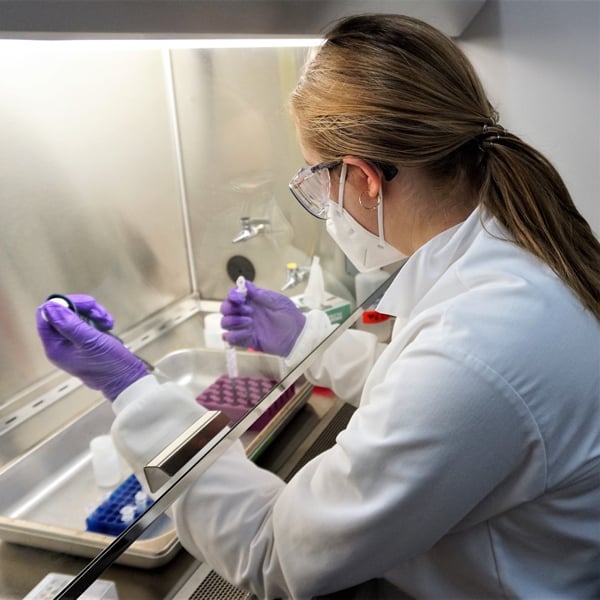
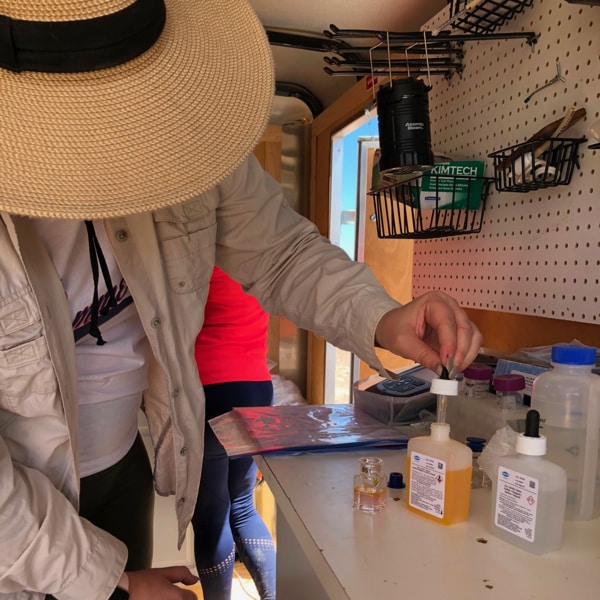
Above, left: Natasha Sushenko processes samples using a biosafety cabinet in the Environmental Microbiology Lab at the Desert Research Institute in December of 2020 during a SARS-CoV-2 wastewater monitoring study.
Credit: Ali Swallow/DRI.
Above, right: Natasha Sushenko performs field chemistries on deep borehole samples in the Funeral Mountains near Death Valley on 28-April, 2021. Here Natasha is using a Hach Colorimeter to measure dissolved oxygen, iron, sulfate, and sulfide to test whether increased rates of pumping from a deep well facilitated collection of deeper samples from a geologic fracture zone. Natasha contributed to the DRI-led portion of an NSF-funded collaboration with Bigelow Lab in ME and others focused on applying cutting-edge genomic approaches to the oceans, marine crustal fluids, and the continental subsurface.
Credit: Detra Page/DRI.
DRI: What are your short-term and long-term goals while at DRI?
Sushenko: Right now, I’m on the master’s degree plan, but I’m considering changing to Ph.D. track to continue working on my project to completion and beyond. The issue of the microbiome of the built environment in closed systems like spacecraft will only become more important as agencies and companies explore travel to the moon and Mars. You don’t get opportunities to work with NASA at every institution, and I’m excited that DRI gives me this opportunity.
DRI: Tell us about yourself. What do you do for fun?
The pandemic has cramped a lot of my favorite hobbies, but usually, I love to travel to visit friends, go camping, hike, and just being outside with others. This past year I’ve instead spent more time hanging out with my dog, gardening (indoors and outdoors), and baking.
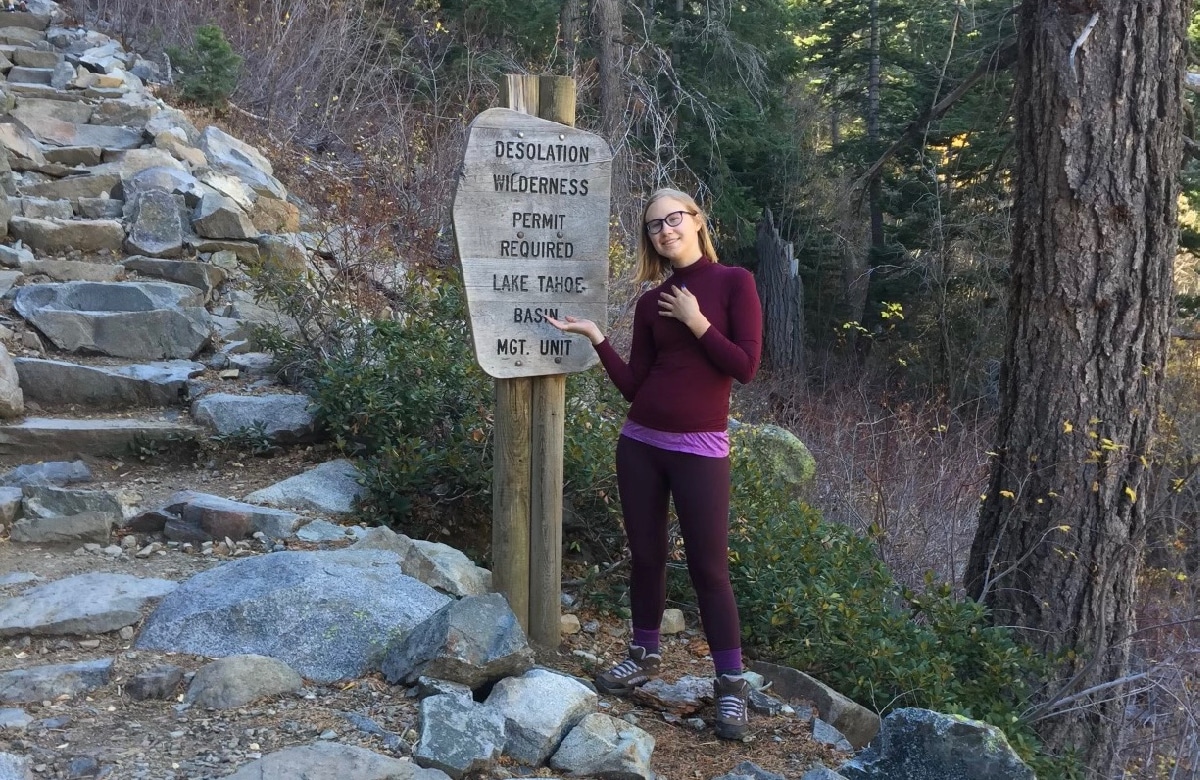
In her free time, Natasha enjoys hiking and being outside in beautiful areas like the Desolation Wilderness in California.
Credit: Natasha Sushenko
Additional Information:
For more information on DRI’s Environmental Microbiology Laboratory, please visit: https://www.dri.edu/labs/environmental-microbiology/
For more information on graduate programs at DRI, please visit: https://www.dri.edu/education/graduate-programs/
